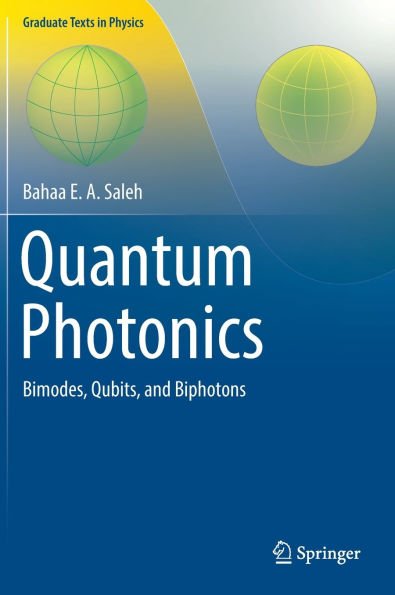A single photon occupying a bimode encodes a qubit, facilitating cryptographic prools for secure communication. When occupying two bimodes, a photon encodes two qubits, enabling local gates. A photon distributed across spatial modes encodes an image. Entangled photon pairs form two qubits, enabling quantum-state teleportation and quantum networks. Additionally, two photons with spatiotemporal modal entanglement form a biphoton, useful for quantum sensing and imaging with sensitivity surpassing classical limits.
With numerous illustrations, examples, and exercises, the book is ideal for classroom teaching or self-study at the upper-level undergraduate or beginning graduate level. It also serves as an accessible introduction for readers interested in the foundational principles driving the second quantum revolution and its diverse applications in communication, computing, and metrology.
A single photon occupying a bimode encodes a qubit, facilitating cryptographic prools for secure communication. When occupying two bimodes, a photon encodes two qubits, enabling local gates. A photon distributed across spatial modes encodes an image. Entangled photon pairs form two qubits, enabling quantum-state teleportation and quantum networks. Additionally, two photons with spatiotemporal modal entanglement form a biphoton, useful for quantum sensing and imaging with sensitivity surpassing classical limits.
With numerous illustrations, examples, and exercises, the book is ideal for classroom teaching or self-study at the upper-level undergraduate or beginning graduate level. It also serves as an accessible introduction for readers interested in the foundational principles driving the second quantum revolution and its diverse applications in communication, computing, and metrology.

Quantum Photonics: Bimodes, Qubits, and Biphotons
479
Quantum Photonics: Bimodes, Qubits, and Biphotons
479Hardcover

Product Details
| ISBN-13: | 9783031891205 |
|---|---|
| Publisher: | Springer Nature Switzerland |
| Publication date: | 06/03/2025 |
| Series: | Graduate Texts in Physics |
| Pages: | 479 |
| Product dimensions: | 7.01(w) x 10.00(h) x (d) |
